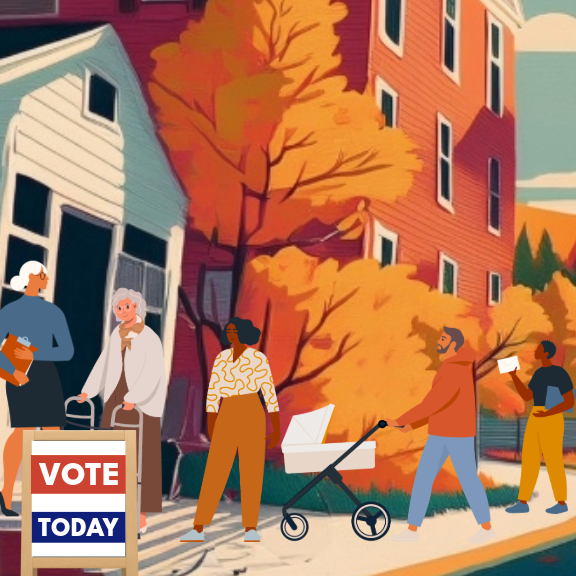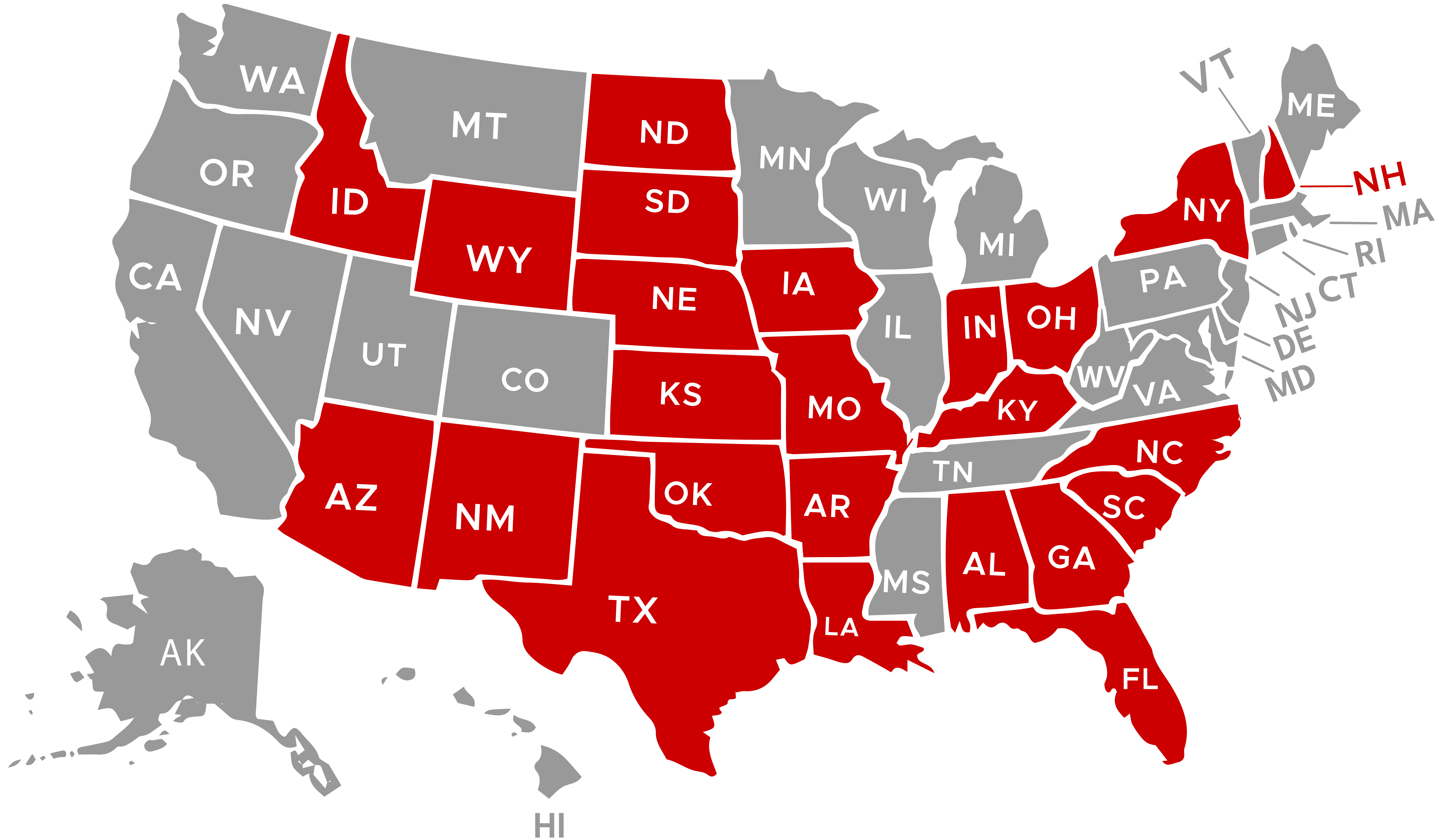A Brief History of...
Voting Rights
Download a printable version of this document here.
Constitutional Foundations
The story of voting rights in America is a story about who holds power, and who is excluded from exercising it. In the Federalist Papers published between 1787 and 1788, founders made a case for a republican system of government where people would elect representatives to govern on their behalf. This approach, in contrast to forms of more direct democracy, helped to facilitate a network of states connected through a strong central government. While checks and balances were enshrined to ensure limits to federal power, such a political system also ensured that factions (or special interests) could not grow too strong and that the will of the majority could not supersede the interests and rights of minority groups.1
Under this new system of government, political representation would be tied to population at the state level, requiring the creation of a national census and ushering in the “Three-Fifths Compromise.” This agreement counted enslaved people as three-fifths of a person when allocating resources and representatives, and served to increase the political power of slaveholding states while simultaneously denying resources and recognition to people on the basis of race. Such a trend would come to shape the struggle for voting rights for generations.
Under the US Constitution, states were empowered to determine who could vote and most extended such rights explicitly to land-owning males. Beyond this, local administrators were granted significant discretion to decide who could vote, resulting in a patchwork of eligibility rules across the newly formed nation. When Maine gained statehood in 1820, the right to vote explicitly excluded women, tribal citizens, those “receiving public charity,” and individuals “under guardianship” due to a disability.
Securing the Right to Vote
While early American suffrage was narrowly framed, the 19th and 20th centuries saw people across race, gender, and class build movements that fought tirelessly to expand voting rights and make democracy real. Such fights were rarely linear. Through the Reconstruction Acts (1867-1868), formerly enslaved men were granted the right to vote and be elected to Congressional seats. In the years that followed, however, “Black Codes” instituted in the South criminalized movements of newly freed slaves and re-entrenched conditions of racial servitude that restricted access to the polls and to political power.2 It wasn't until 1870 when the 15th Amendment was ratified that Black Americans gained the constitutional right to vote.
Realizing Suffrage in Practice

Even once the right to vote was enshrined in law, a lack of enforcement meant that many people’s rights went unrealized. In 1876, for example, the US Supreme Court interpreted the 15th Amendment as prohibiting only those laws that explicitly restricted race as a prerequisite for voting, allowing alternative forms of voter suppression to be upheld. Following the ruling, states and local municipalities saw a rise in grandfather clauses, poll taxes, and literacy tests that were crafted and applied selectively to restrict access to the polls in Black communities - without ever naming race as an exclusion. These prohibitions had a significant and long-lasting impact. Voter registration within Black communities plummeted in southern states, and despite holding seats in local and national offices prior to 1901, there would be no Black representatives in the US legislature again until 1929 in the House and 1967 in the Senate.
Policies and practices restricting ballot access for Black Americans remained pervasive throughout the 20th century, leading civil rights activists to mobilize in a multi-year, nationwide movement for a national Voting Rights Act. Eventually passed in 1965, this Act created an enforcement mechanism for the 15th Amendment, and abolished literacy tests and other voting prerequisites that disproportionately disenfranchised communities of color. The passage of the Voting Rights Act resulted in skyrocketing voter registration and turnout among Black Americans. It has been expanded and reaffirmed several times, first in 1975 to expand voting protections for language minorities, then in 1982 to provide protections for disabled voters, and again in 1995 to expand voter registration laws. Litigation around this piece of legislation, however, continues to shape who holds political power and can leverage that power at the ballot box.
Ongoing Challenges to Realizing our Rights to Vote
While the 1965 Voting Rights Act significantly expanded the franchise in practice, continued efforts to restrict access to voting continue to disproportionately impact communities of color, low-income voters, and working people. These include, but are not limited to:
| States with Restrictive Changes to Voter ID, Mail Voting, and Ballot Collection Requirements Since 2020. Adapted from the Brennan Center for Justice. |
|---|
 |
Gerrymandering: Gerrymandering is the process of manipulating political boundaries to favor a particular political party or candidate. This process has historically been weaponized against communities of color as a means of limiting political agency. While the Voting Rights Act addressed racial gerrymandering, or redistricting on the explicit basis of race, in 2019 the Supreme Court in Rucho v. Common Cause declared gerrymandering on the basis of political party constitutional. The result remains largely the same: significant limitations in access to political power among communities of color.
Restrictions to absentee voting: Voting by mail and absentee voting remove barriers for those who work during the day, lack access to transportation, must care for family, or otherwise are unable to vote in person. Absentee voting offers particular benefits to low-income voters, active military personnel, working people, people with disabilities, and voters of color who face disproportionate barriers to voting in person on election day.
Limiting same-day voter registration: In all states except North Dakota, voters must register to vote, with eligibility requirements varying by state. In 23 states, including Maine, voters can register to vote and cast their ballot on the same day, which removes barriers and improves access. Same-day voter registration has been particularly important in recent decades, as several efforts to purge voter rolls have advanced since the early 2000s.
Voter ID laws: Thirty-six states require or request that voters show identification to vote. These requirements disproportionally impact people of color, low-income voters, seniors, and people with disabilities. Access to photo identification, such as a driver’s license or passport, requires money, time, and knowledge to navigate application processes. Studies have shown that when strict voter ID laws are in place, people of color face significant barriers to voting.
Restricting polling places and wait times: Between 2018 and 2022, the number of polling places across the US was cut by more than half. A major reason for this was the 2013 Shelby County v. Holder Supreme Court decision, which weakened the Voting Rights Act and opened the door for states to restrict access to the ballot. While this is to the detriment of all voters, such policy changes have been shown to systematically discriminate against Black and Brown voters who are more time-burdened and often have limited access to transportation.
While none of the policies or practices being negotiated today explicitly restrict voting by race, their effects remain unequal. More than 160 years after Black Americans first won the right to vote, the fight to realize universal suffrage in practice continues.
| Notes |
|---|
|
1. In the wake of Shays’ Rebellion (1786), the founders were particularly concerned about the need for a centralized government to respond quickly and forcefully to popular uprisings rooted in economic unrest. |
|
2. We continue to see the legacy of these practices today in the disenfranchisement of individuals convicted on felony charges. In many states, convicted felons are unable to vote at all or must wait until release from prison, or completion of parole or probation.This disproportionately impacts Black Americans who are more likely to be incarcerated as a result of a criminal legal system that targets communities of color. In Maine, however, the right to vote is not impacted by a felony conviction. |
Where Can I Go to Learn More?
Public Resources
Learn information about upcoming elections in Maine
More Information on the History of Universal Suffrage
Wang, T. A. (2012). The politics of voter suppression: Defending and expanding Americans' right to vote. Cornell University Press.
US Commission on Civil Rights. (2018). An Assessment of Minority Voting Rights Access in the United States. 2018 Statutory Enforcement Report.

